March 2022 is my second semester at New Oriental Cooking School. In the first semester, we mainly practiced the basic skills of Chinese chefs: knife techniques, and the techniques of cooking with woks. In the second semester, we started learning something more detailed. Would you like to hear what happened to me this month? Let me tell you.


Jam Painting
Why does Chinese chef training include learning to paint with jam? In fact, Chinese chefs are not just stir-frying, they are not always with the stove, Chinese chefs also need to be able to make cold dishes, make Chinese noodles, and so on. Jam painting and food carving are types of plate decoration, which is a skill that a Chinese chef should have. The plate decoration can make the dish look more beautiful and make the customer enjoy the dish more.


In March, we have started the jam painting assessment, 1-2 times a week. We complete this assessment in a 1.5-hour evening course. Because we are beginners, we will have a original picture of the jam drawing, a simple instructional video. Then we follow the video tutorial to copy. The next day the teacher will choose the best 5 works and the worst 5 works among all the student paintings. Good works will receive +1 point, and bad works will receive -1 point.
Student motivation
This model will motivate the students, everyone wants to be excellent, get a reward score, so the students will take each assessment seriously. The relationship between the students is to compete with each other, learn from each other, and help each other.
How jam painting is evaluated
Now, the teacher’s criteria for evaluating jam painting works are whether the colors in the works are bright, whether there is a clear sense of color layering, and when using a variety of jams to mix, it also depends on whether the colors are uniform. Finally, there is the degree of similarity of the overall work.
My jam paintings as a beginner are ordinary, but I’ll keep trying because it’s really fun to draw interesting patterns on a plate. So let’s take a look at some of my jam paintings from March!

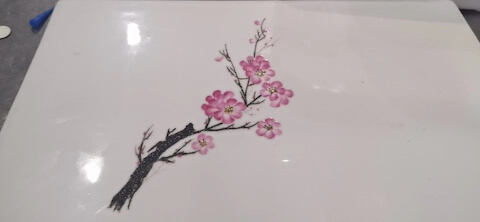

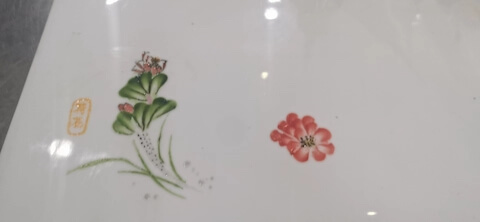


March Cooking Curriculum
New Oriental Cooking School arranges the curriculum of each stage so that students can better grasp the relevant knowledge. In March, we ushered in a one-month cold dish course. We rarely use the stove for stir-frying, but we often use the stove. In addition to heating the ingredients to maturity, we also need to boil the water every day to sterilize the cutting board and kitchen knife, because most of the cold dishes are cut on the board, then directly stirred with the sauce or directly placed on the plate.


Teachers tell us that making cold dishes is as important as stir-frying, and we want to make sure that every dish that customers eat is clean and hygienic. We do not want to cause customers any illness or food safety disputes, so we need to sterilize the board at high temperature.
Preparation, presentation, and knife skills
The preparation of cold dishes is simple, and there are usually two situations. The first is to cut and mix the raw ingredients directly, then mix the sauce and ingredients and plate them. For example: cucumbers, carrots, raw vegetables. In the second case, the ingredients need to be processed, cooked, cooled, and then plated and poured with sauce. Cold dishes do not require much technical expertise, but they need to be well cut, well seasoned, and delicately plated.
Let’s take a look at some of the cold dishes I made at school:
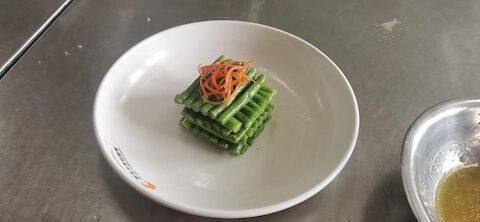
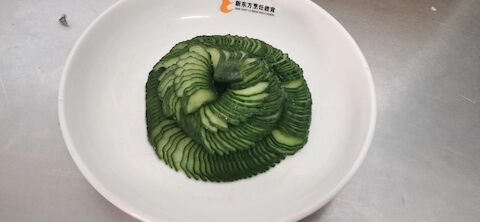

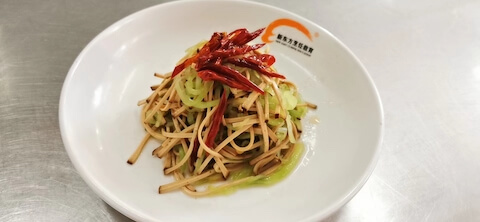


Do you enjoy My Chinese Home Kitchen?
We enjoy sharing these authentic home recipes with you. Learn more about My Chinese Home Kitchen at our About page.
Please leave a comment, or SUBSCRIBE to our newsletter.
For more of our original videos, visit My Chinese Home Kitchen on YouTube and Rumble.



I really enjoyed reading about and seeing the jam painting! Beautiful images and very detailed. I enjoy reading about Jing’s schooling